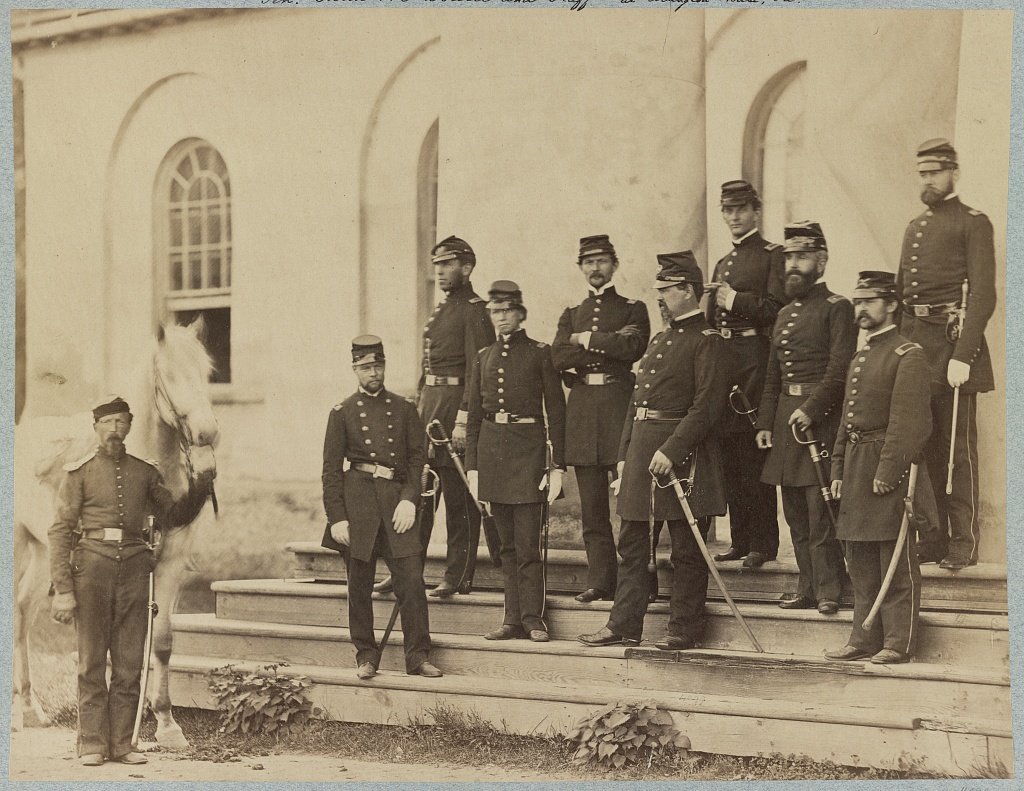The first historical precedent that provided inspiration for Flowers of Remembrance Day occurred in the aftermath of the Civil War. In 1864, the U.S. Army began to bury the war dead on the Arlington property, which it had seized in 1861 for defensive purposes. At first, Arlington was no different than the other national cemeteries established out of necessity during the Civil War. Initially, burial in one of these national cemeteries was not considered an honor: it meant a family could not afford the high cost of transporting their loved one home for burial and went against the contemporary ideals of what constituted a “good death.”

General Irvin McDowell and his staff on the steps of Arlington House in 1862. Library of Congress.
However, all of that changed with the emergence of the Decoration Day commemoration now known as Memorial Day. Faced with the astonishingly high death toll of the Civil War—about 620,000 total deaths on both sides from combat and disease—Americans grasped for ways to channel their grief and honor the fallen. People began the ad-hoc, grassroots ritual of decorating the graves of their loved ones with flowers. The first such event of this type may have occurred as early as May 1, 1865, when a group of African Americans in Charleston, South Carolina, along with local supporters and U.S. troops, took part in a procession to the graves of U.S. prisoners of war located at a former racetrack that had been converted into a prison for U.S. soldiers by the Confederacy. The group decorated these graves with flowers, including roses.
While local observances continued, Decoration Day coalesced into a more official event in May 1868 with the first official, annual, national observance of Decoration Day at Arlington National Cemetery, initiated by former U.S. Army Maj. Gen. John A. Logan, a Civil War veteran. At the time, Logan served in Congress and as the commander-in-chief of the Grand Army of the Republic (GAR), the nation’s largest organization of U.S. Civil War veterans. In GAR General Orders No. 11, he designated May 30, 1868, as a day of national remembrance for the memorialization of U.S. war dead. In this order, he encouraged the “strewing with flowers or otherwise decorating the graves of comrades who died in defense of their country during the late rebellion.” Logan’s order only directed the memorialization of the dead from the U.S. Army, those men, he wrote, whose lives had been “the reveille of freedom to a race in chains and their deaths the tattoo of rebellious tyranny in arms.” People in the South frequently held their own observances for the Confederate dead—often led by women—which took place on various dates, depending on the locality.
